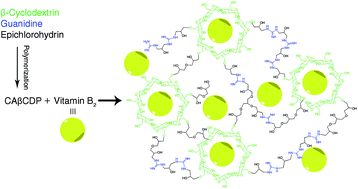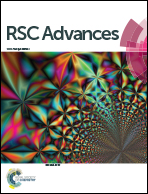Water-soluble cationic poly(β-cyclodextrin-co-guanidine) as a controlled vitamin B2 delivery carrier
Abstract
Vitamin B2 (VB2, as an important nutrient) is effectively incorporated into novel water-soluble cationic β-cyclodextrin (β-CD) polymers in order to improve its physiochemical properties. The properties of encapsulated VB2 are characterized by FT-IR, 1H NMR and 13C NMR for interaction between host and guest; DSC for thermogram properties; DLS for size and size distribution; zeta potential for surface charges and host–guest interaction types and water solubility study. The proposed novel water-soluble cationic poly(β-CD-co-guanidine) (CAβCDP) is synthesized by β-CD and guanidine (GN) as a building block and epichlorohydrin (EP) as a crosslinker through a one-step polymerization procedure at varying molar ratios of GN related to EP and β-CD. These prepared polymers are characterized by FT-IR, 1H NMR, 13C NMR, TGA, DTG, DSC, DDSC and Kjeldahl methods. In addition, the solubility of the CAβCDP in water media, in order to recognize the effect of entered GN in the solubility behaviour of CAβCDP, is determined. The in vitro release behavior of VB2 from CAβCDPs is investigated in various simulated physiological media, and exhibited initial burst and then slow VB2 release. It is found that the cationic β-CD polymers with high GN content exhibit slower vitamin release compared to the others.



 Please wait while we load your content...
Please wait while we load your content...